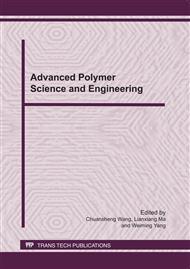p.1
p.8
p.15
p.21
p.27
p.32
p.37
p.43
Research on Bonding of PMMA Microfluidic Chip with Precisely Controlled Bonding Pressure
Abstract:
Microfluidic chips have a great prospect in the field of biochemical analysis with advantages of fast processes, high flux and low consumption. Molding and bonding are separated by the conventional procedure of hot embossing and bonding, resulting in low automation and long production cycle. In order to reduce cycle time and achieve mass production, this paper proposed In-mold Bonding technology with precisely controlled bonding pressure by injection molding machine’s movement of core-pulling. So simulation analysis for bonding process of PMMA microfluidic chip was carried out using finite element software to study microchannel distortion at different bonding temperature and pressure. The results show that, at a certain bonding pressure, when bonding temperature was lower than glass transition temperature(Tg), microchannel distortion didn’t change significantly, when bonding temperature was higher than Tg, microchannel deformation increases with increasing temperature. Small microchannel distortion was obtained at a temperature of 108°C,which was recommended as the suitable bonding temperature.
Info:
Periodical:
Pages:
8-14
Citation:
Online since:
March 2011
Authors:
Price:
Сopyright:
© 2011 Trans Tech Publications Ltd. All Rights Reserved
Share:
Citation:


